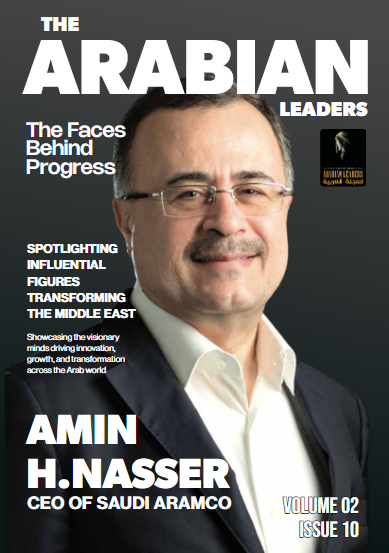Saudi Arabia’s journey toward becoming a global sporting powerhouse has taken a bold and measurable leap. According to recent reports, the market value of the Kingdom’s sports sector has skyrocketed from a modest $1.33 billion in 2016 to a staggering $85.3 billion in 2023. This explosive growth is not merely statistical—it is symbolic of the nation’s wider socio-economic transformation under Vision 2030. As sports becomes a strategic pillar of national identity and economic diversification, Saudi Arabia is reshaping how the world views its presence on the global sporting stage.
Vision 2030: Redefining the Game
When Crown Prince Mohammed bin Salman launched the Vision 2030 plan, sport was not simply an afterthought—it was an essential lever in driving economic and cultural change. The goal was multifold: to boost public participation in physical activities, attract global sporting events, invest in local talent, and diversify income sources beyond oil. Fast-forward to 2023, and the numbers tell a compelling story. From state-of-the-art stadiums and regional tournaments to investments in international sports properties, Saudi Arabia has moved from ambition to action.
The leap from $1.33 billion to $85.3 billion in just seven years signals a deliberate and aggressive strategy to make sports not only a cultural staple but a robust economic contributor. That rise is not incidental—it is backed by government-led initiatives, public-private partnerships, and a clear understanding of sports as a commercial force.
Infrastructure Development: Laying the Groundwork
A significant chunk of this growth can be attributed to the Kingdom’s massive infrastructure projects. The creation and renovation of sports facilities, including stadiums, arenas, and sports cities across Riyadh, Jeddah, and beyond, have turned Saudi Arabia into a viable host for world-class events. Mega-projects like NEOM, Qiddiya, and the Diriyah Gate Development have integrated sports as a core theme in their planning.
Qiddiya, in particular, is envisioned as a hub for motorsport, football, and extreme sports, designed to draw millions of domestic and international visitors annually. These investments are not only about physical structures—they are symbolic statements of intent. Saudi Arabia is no longer a bystander in global sports; it is becoming a central stage.
Hosting Global Sporting Events
The sports sector’s valuation leap also stems from Saudi Arabia’s successful bid to host international tournaments and championships. From Formula 1 and WWE events to boxing matches and the Spanish Super Cup, Riyadh and Jeddah have welcomed spectators and athletes from around the world.
Furthermore, Saudi Arabia is the confirmed host for the 2027 AFC Asian Cup and is bidding to host the 2034 FIFA World Cup. Such events bring in billions in sponsorship, tourism, merchandising, and media rights. The government’s commitment is clear—sports is not just entertainment; it is economy-building.
The Rise of Saudi Athletes
Another major focus of the Kingdom’s strategy is talent development. By supporting local sports clubs, funding youth training programs, and building grassroots organizations, the country is nurturing a new generation of athletes who can compete on global platforms.
Increased funding to local federations and the introduction of national leagues in football, basketball, handball, and even emerging sports like esports demonstrate a long-term approach. The presence of Saudi athletes on international podiums and the growth in their rankings underscore the domestic efforts toward excellence.
The Role of Public-Private Partnerships
One of the defining elements of the $85.3 billion valuation is the surge in public-private partnerships. Through initiatives such as the Saudi Sports for All Federation and deals with global sports brands, the government has invited local and international investors to be part of its vision. Entities like the Public Investment Fund (PIF) have also taken center stage in acquiring stakes in international clubs and organizing sporting franchises domestically.
The sports ecosystem is now interlinked with tourism, entertainment, education, and technology. Sponsorships, media rights, e-ticketing systems, sports analytics platforms, and streaming services are part of the rapidly maturing market. Businesses and entrepreneurs are now seeing sports as a viable sector for investment, innovation, and long-term growth.
Economic and Social Impact
This valuation is more than a financial figure—it is a reflection of the societal and economic shift happening in Saudi Arabia. Sports has become a vehicle for job creation, youth empowerment, tourism growth, and healthier lifestyles.
Job opportunities have expanded across sports management, event planning, physiotherapy, coaching, and digital content creation. At the same time, the emphasis on women’s participation in sports—once a cultural taboo—is now mainstream, with the launch of national women’s teams and leagues.
The ripple effects are everywhere: increased consumer spending on fitness, rising demand for athletic gear, growth in sports academies, and higher footfalls at sporting events. Sports is no longer confined to a niche community—it is a national movement.
Media and Global Perception
The transformation of Saudi Arabia’s sports sector has been met with international interest and scrutiny. While critics often view the rapid rise through the lens of sportswashing, many observers also recognize the genuine investment in building a sustainable and inclusive sports ecosystem.
Media coverage has increased dramatically, with global outlets paying close attention to the Kingdom’s sports calendar. Saudi-based publications and broadcasters have also risen to the challenge, producing world-class content and telling local sports stories with global relevance.
Moreover, the internationalization of sports in Saudi Arabia has improved the Kingdom’s global standing, helped diversify its brand identity, and fostered cross-cultural exchange through shared passion and competition.
The Road Ahead: 2030 and Beyond
As the sports sector matures, expectations are high for the years ahead. With 2030 still five years away, the journey is far from over. The government aims to raise the percentage of the population that exercises weekly to 40%, up from 13% in 2015. More facilities, youth programs, and sporting events are in the pipeline.
Saudi Arabia also plans to deepen its integration with global federations, become a launchpad for regional talent, and potentially dominate sectors like esports, motorsports, and professional wrestling. The synergy between Vision 2030 and the sports sector is crystal clear—each propels the other.
Conclusion
Saudi Arabia’s sports sector is no longer a peripheral player—it is a heavyweight. The $85.3 billion valuation stands as a milestone, but it is also a starting point for even greater ambitions. With Vision 2030 guiding the way, the Kingdom has laid a foundation that extends beyond the playing field—touching lives, building careers, inviting global partnerships, and creating unforgettable experiences.
The next chapter in Saudi sports will not be written in isolation. It will involve global fans, athletes, media, investors, and youth who see in Saudi Arabia not just a nation on the rise, but a leader redefining the global sports economy.








